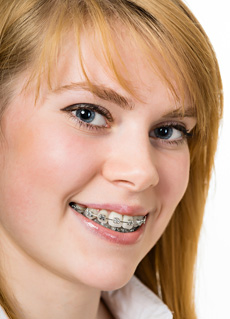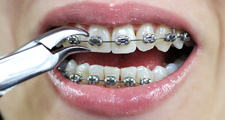
Teen Orthodontics
Most orthodontic patients begin orthodontic treatment between the ages of 9 and 16, depending on the particular patient's occlusion (bite) and dentition (the type, number and arrangement of a set of natural teeth). Typically, adolescent years are the optimal time to rectify orthodontic problems as teenagers have not yet finished growing.
Orthodontics treatment (through the use of dental braces, most often) corrects genetic problems such as crowding, spaced teeth, protruding upper teeth, extra or missing teeth and jaw growth abnormalities. Other malocclusions (bad bites) are acquired through finger-sucking as a child, periodontal (gum) disease, poor dental hygiene, early or late loss of primary teeth, trauma or poor nutrition.
Orthodontics is integral to dental health as crooked or crowded teeth are hard to clean and thusly lead to tooth decay, tooth loss or periodontal disease. Malocclusion can also result in abnormal erosion of tooth surfaces, difficulty in chewing and speaking, unnecessary strain on supporting bone and gum tissue, and eventual jaw joint problems. Orthodontic treatment to correct problems early is frequently less costly than later dental care to correct problems that have been allowed to progress into adulthood.


